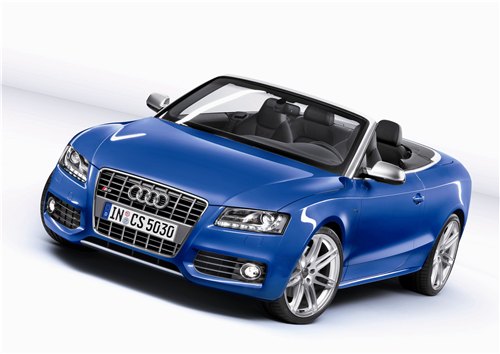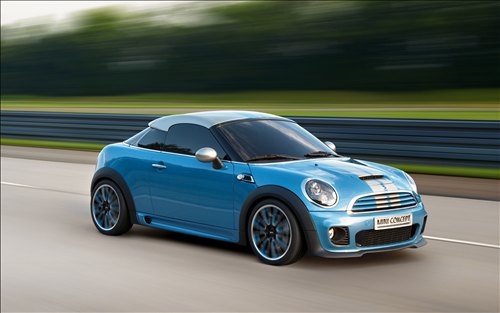Which one is better? Fiat Punto or Maruti Ritz or Tata Indica Vista? A detailed comparison is given.
Design and Styling
Though these hatchbacks look smaller in size, there is enough interior space in all three of them. All of them have most modern styling and design. Where Punto and Vista have Italian Design, Ritz owes its design to the Japanese.
The Fiat Punto's grill is similar to that of Maserati cars. The sloping wind screen, entirely different bonet, mercury drop headlamp, the front quarter glass and the long bumper gives Punto a stylish look. Punto is a medium size car with 195-60 R 15 tyres and larger wheel arches. The suspension has been lifted a little for Indian models. The Fiat logo and vertical tail lamps at the rear captures everyone's attention. The higher models have ABS, airbags and automatic a/c.
The design of A-star has influenced the Ritz's design a lot. The design has similarities to that of A-star. But when closely examined, both can be distinguished quickly. The rear side of Ritz itself differs from that of A-star. The Ritz has a more sporty look. It is equipped with security features such as ABS and EBD. The diesel model doesn't have alloy wheels. New Ritz comes in 5 colours. The interior of Ritz has a blue-black colour coding.
The Tata Indica Vista comes in a new platform with Fiat engine. The new model is larger in size than its predecessor Indica. The smiling grill as in old Indica gives a similarity with the old model. The new vista has a compact design. The headlamps in new vista gives Vista a modern look. The tail lamps are same as that in old Indica. The Vista has body colour rub rails, door handle and wing mirrors. Vista comes in three variants-Terra, Aqua and Aura among which Aura is cuter. Vista hav larger interior spacing and comfortable interiors.
Comparatively, the Ritz has a more radical design. Punto has pure European design. The biege interior of Vista is also good. But vista doesn't have steering stereo controls.
Among the three cars, passenger cabin space is higher for Vista. The dicky space for the three is:
* Punto-280L
* Ritz -236L
* Vista -232L
Driving
The 1.3 multi-jet engine in the three cars gives different performance. The weight, suspension features, tyre size, gear ratio etc. influences the performance a lot.
May be because of the higher gear ratio of Punto, the power of Punto is above 2000 rpm. The Punto with 1190 kg has more weight among the three. As a result, there is a little lag. The 0-100km time is slightly greater. The topspeed is 155km. As it can be driven at 30km/hr even above 3rd gear, city driving is easier. 15 inch tyres increases road grip and road handling. All together, Punto has all comforts of an European car.
The Ritz which is built on Swift platform is larger in size than Swift. The larger size is reflected in the driving also. The Ritz weighs 1110 kg only. As a result, Ritz has highest performance among the three. The max. power is above 2000 rpm. Among the three, only Ritz has electric steering.
Vista is also heavier than Ritz. It weighs 1140 kg. As a result pick up has decreased a little. Larger size increases Vista's road grip. Light clutch and improved gear shift increases Vista's drivability. Vista is no.1 in travel comfort.
| TECH SPECIFICATIONS | |||
| | INDICA VISTA | FIAT PUNTO | MARUTI RITZ |
| ENGINE | 1248 cc, 4 Cylinder, Quadrajet | 1248 cc, 4 Cylinder DDiS | 1248 cc, 4 Cylinder, Multijet |
| MAX. POWER | 74 bhp @ 4000 rpm | 74 bhp @ 4000 rpm | 74 bhp @ 4000 rpm |
| MAX. TORQUE | 190 Nm @ 1750 rpm | 190 Nm @ 1750 rpm | 190 Nm @ 2000 rpm |
| GEAR TRANSMISSION | 5 Speed manual | 5 Speed manual | 5 Speed manual |
| SUSPENSION | Front:-Independent, Mac Pherson Struts, Coil springs Rear:-Semi Independent, twist beam with coil spring and shock absorbers. | Front:-Independent, Mac Pherson Struts, telescopic Dampers, stabilizer bar Compound link crank axle Rear:-Torsion beam axle | Front:-Independent, Mac Pherson Struts, Coil springs Rear:-Torsion beam and Coil spring |
| BRAKES | Front:-Discs Rear:-Drums | Front:-Discs Rear:-Drums | Front:-Discs Rear:-Drums |
| TYRES | 175/65 R 14 | 195/60 R 15 | 165/80 R 14 |
| L X W X H (mm) | 3795 X 1695 X 1550 | 3987 X 1687 X 1495 | 3715 X 1680 X 1620 |
| WHEEL BASE (mm) | 2470 | 2510 | 2360 |
| GROUND CLEARANCE (mm) | 165 | 170 | 170 |
| KERB WEIGHT | 1140 kg | 1190 kg | 1110 kg |
| TURNING RADIUS | 5 m | 5.25 m | 4.7 m |
| MILEAGE | 15.15 km/L | 15.6 km/L | 17.35 km/L |
| PRICE | Rs.4.46 - 4.75 lakhs | Rs.4.92 - 6.18 lakhs | Rs.4.65 - 4.99 lakhs |
Performance
0-100km time
* Punto-17.84 s
* Ritz -15.18 s
* Vista -16.36 s
Mileage
* Punto-15.6 km
* Ritz -17.35 km
* Vista -15.15 km
Price
* Punto-Rs.4.92 - 6.18 lakhs
* Ritz -Rs.4.65 - 4.99 lakhs
* Vista -Rs.4.46 - 4.75 lakhs
Verdict
For performance lovers, Ritz is the best option. For those who prefer brand and styling, Punto is no.1. For those who consider price, interior spacing and maintenance cost, Vista is the best choice.
Tags:- Fiat Punto vs Maruti Ritz vs Tata Indica Vista, Fiat Punto, Punto, Indica Vista, Vista, Tata Indica Vista, Ritz, Maruti Ritz, Maruti Suzuki Ritz, Maruti Suzuki Ritz specifications, Maruti Suzuki Ritz specs, Maruti Ritz specifications, Suzuki Ritz specs, Maruti Ritz mileage, Maruti Ritz price, Maruti Ritz engine, Maruti Ritz features, Tata Indica Vista specifications, Tata Indica Vista specs, Tata Indica Vista mileage, Tata Indica Vista performance, Tata Indica Vista price, Tata Indica Vista features, Fiat Punto specifications, Fiat Punto specs, Fiat Punto features, Fiat Punto price, Fiat Punto mileage, Fiat Punto and Maruti Ritz comparison, Fiat Punto and Indica Vista comparison, Maruti Ritz and Indica Vista comparison




















































